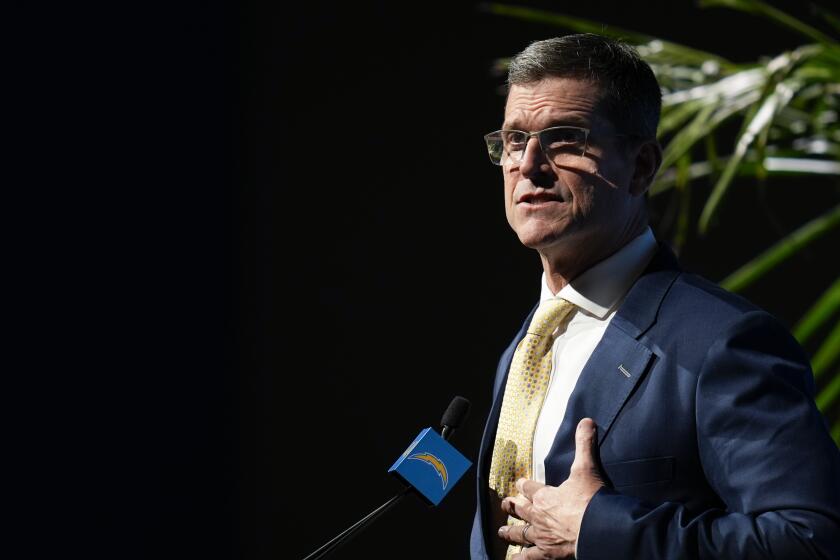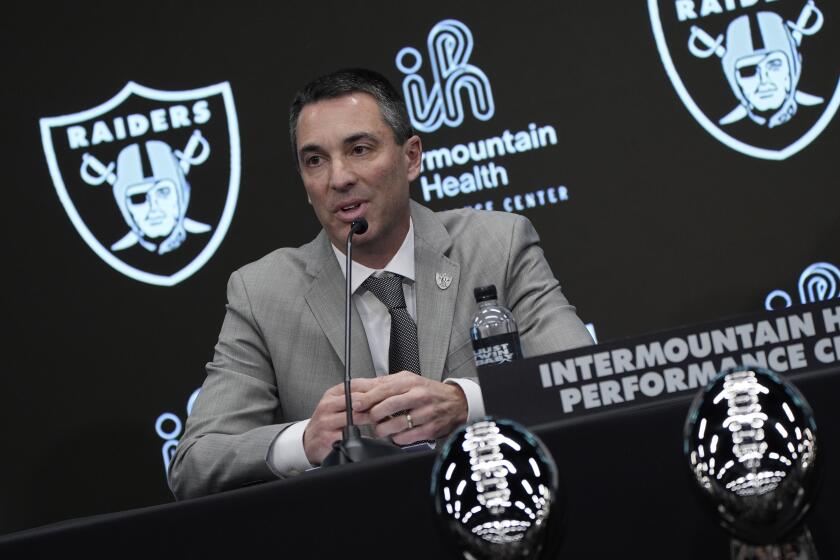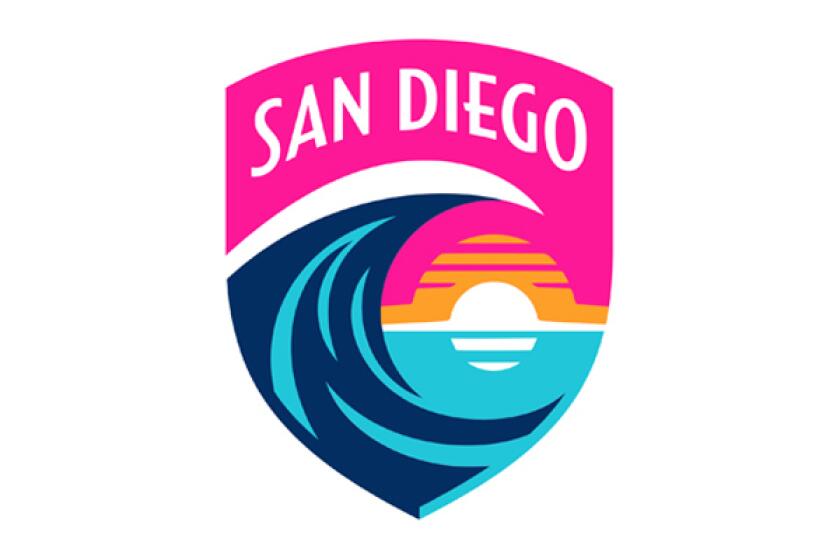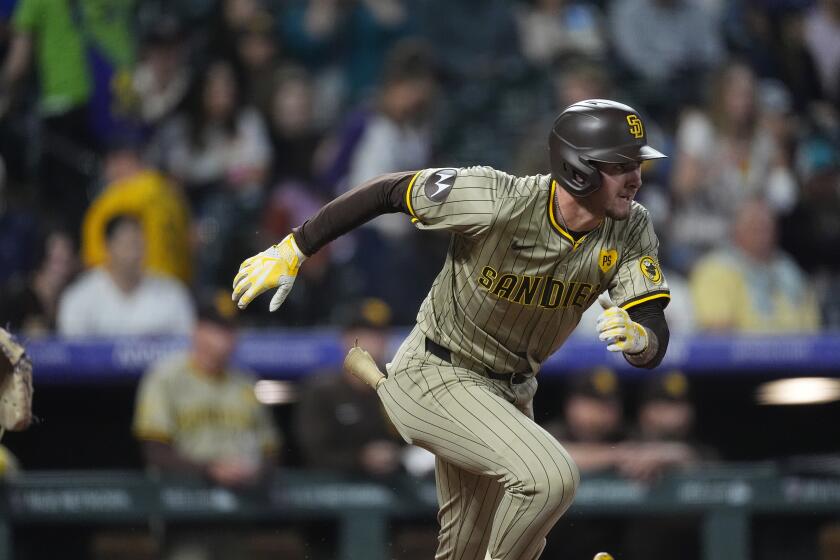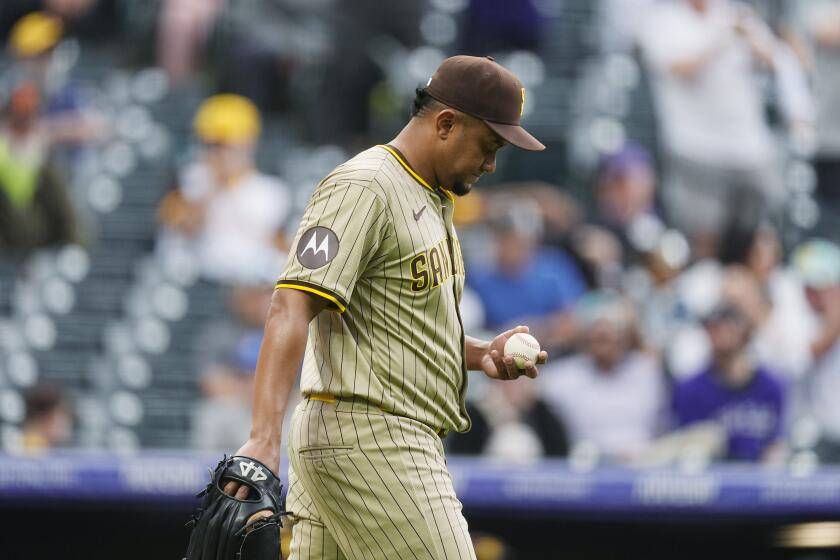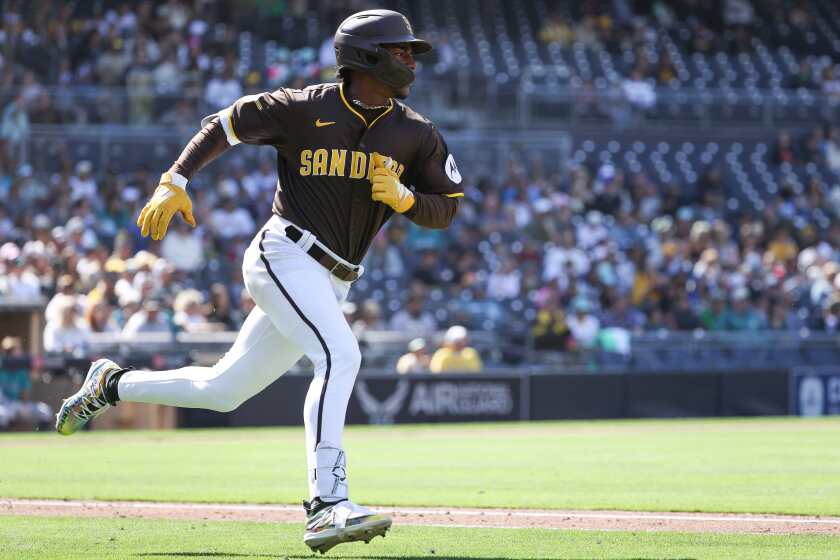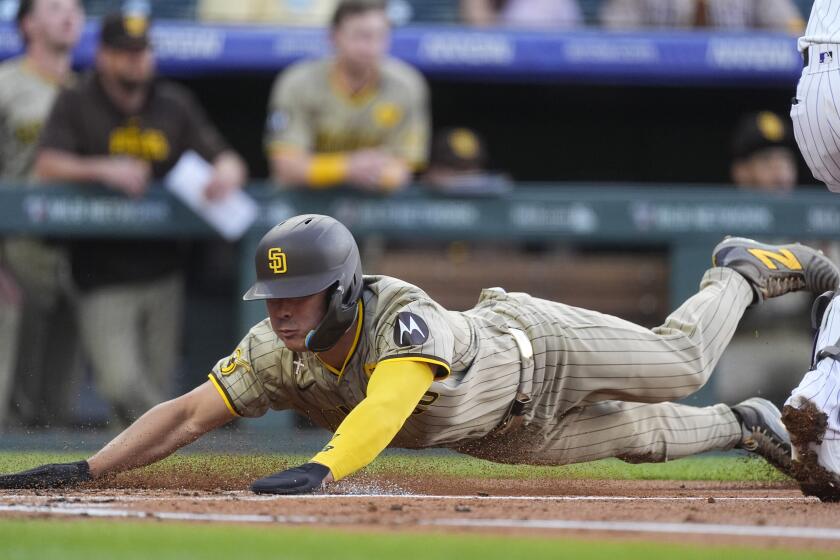Column: MLB is moving toward NFL model that John Moores touted as Padres owner

When he owned the Padres, John Moores displayed a stubborn case of NFL envy.
Moores, in chats on the record, said the football league’s business model made great sense.
For example: Moores told the Union-Tribune between 2000 and 2002 that Major League Baseball ought to expand to 32 teams and break itself into eight divisions of four clubs.
“Like the NFL,” he said.
Moores was ahead of the game, it seems.
Senior baseball writer Jayson Stark of The Athletic reported last week that MLB is certain to add two teams, getting it to its desired total of 32.
And when the new clubs are chosen, Stark implied that MLB will break itself into eight divisions of four teams.
The current model is six divisions of five teams.
Read Stark’s article for the details, but it appears Moores was on the mark.
Moores saw several NFL ingredients as money-makers. The NFL has proved him right, growing into a $14 billion industry.
He liked the 32-team, four-by-eight structure to boost fan interest, the odds of winning a division improving from 20 percent to 25 percent.
MLB Commissioner Rob Manfred sees dollar bills, too, and not only the millions from expansion fees.
A bigger league means a bigger postseason and bigger media rights fees.
Manfred wants a “more geographically based alignment” that would not only cut travel cost but increase broadcast revenues. If both teams are from the same time zone or only one time zone apart, it’s easier to air the game in prime time.
What would an NFL model mean for the Padres?
Say Portland was added to MLB, along with Nashville or Montreal.
Now, say MLB scrapped the two leagues, while making the DH universal, which would boost scoring.
Align the Pads with three clubs that are within an hour’s flight: The Dodgers, Angels and Diamondbacks.
The A’s, Giants, Mariners and the Portland club would form another Western division.
Absent leagues, the two divisions could meet more often.
In a competitive sense for the Pads, the NFL model would represent the friendliest MLB format in their history. For all but a few years in the 1990s, the Pads have worked in a West division that numbered five or six teams. Yes, they won a four-team West in 1996. But the postseason format then treated them nearly the same as wild-card winners, unlike now when winning a division confers a real advantage in October.
Go back to the 1970s, 1980s and early 1990s, when San Diego had to get past five West teams to reach the playoffs, and it was much tougher. (Making the road Himalayan in the ’70s, when the Pads were generally bad, Cincinnati’s “Big Red Machine” of the Eastern time zone was housed in the West, while the Dodgers averaged 92 victories across nine winning seasons from 1970-79.)
Back when Moores praised the NFL model, he raised a fairness theme.
”You want to level the playing field as much as possible,” he said.
The comment called to mind another sports team owner, the late Art Modell, quipping that NFL owners are 32 fat cats who vote socialist.
Moores championed, with significant success, the NFL-style approach of spreading more MLB revenues among the San Diego-sized media markets. The current and previous MLB labor pacts did the Pads a few favors, too, including gifting them and other smaller media-market-and-revenue clubs with an upper-end draft pick every year.
The NFL Chargers failed in their bid to relocate to the East Village, and the Padres liked it that way. In the meantime, MLB has continued to move toward the NFL model, a favorable trend for Pads ownership and the team’s fans.
Tom.Krasovic@SDUnionTribune.com; Twitter: SDUTKrasovic
Go deeper inside the Padres
Get our free Padres Daily newsletter, free to your inbox every day of the season.
You may occasionally receive promotional content from the San Diego Union-Tribune.


